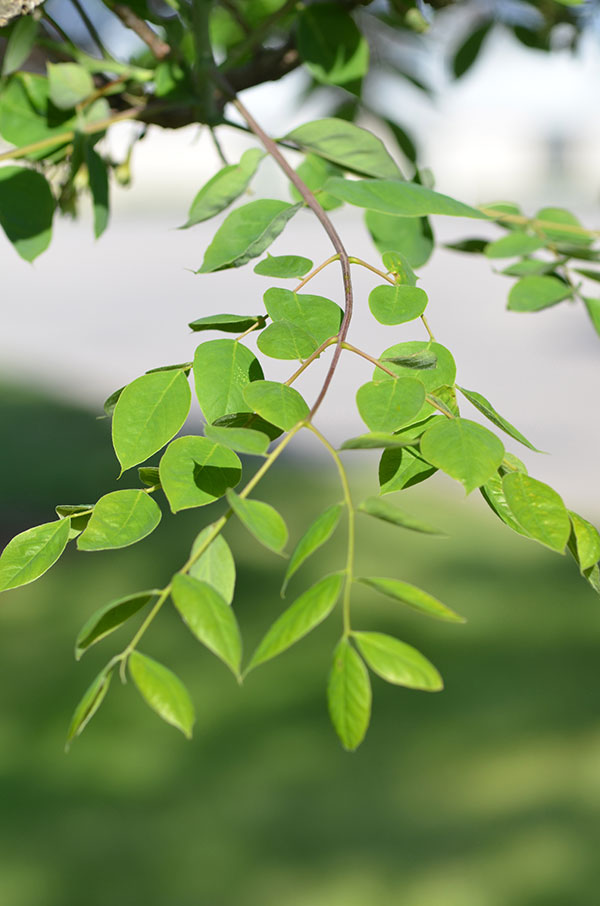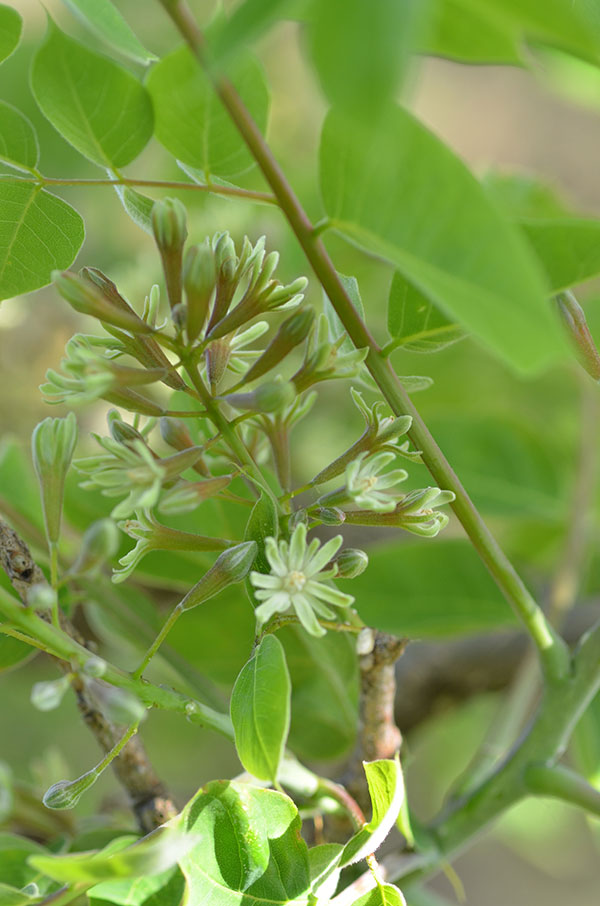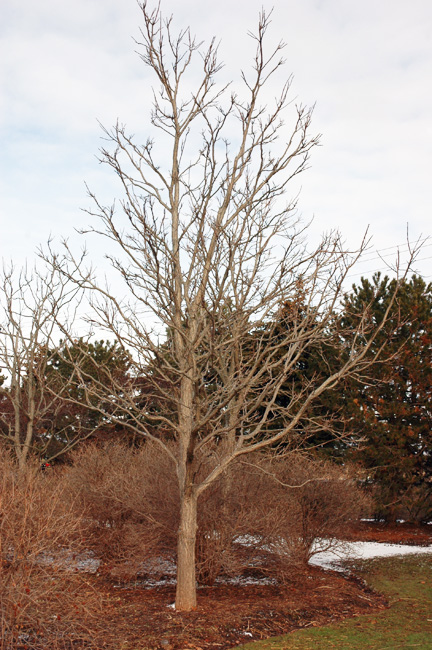
Woody > Gymnocladus > Gymnocladus dioicus > Gymnocladus dioicus
Gymnocladus dioicus
Kentucky Coffee Tree
Mike's
Opinion


"
An unusual and dramatic tree, as in winter its haunting form (lack of lateral branching) dominates the landscape. More an oddity but still a regal tree that is quiet when in leaf but again odd when stout pods hang from bare branches like roosting bats. This is a Carolinian plant that is trouble free. It is one of the first to drop its leaves and one of the last to leaf out in the spring. The seeds can be ground and used as a substitute for coffee. There is a beautiful street lined with them in Windsor and it would appear from their health that they are salt tolerant and enjoy the street side location.
Michael Pascoe, NDP., ODH., CLT., MSc. (Plant Conservation)
"
| Family |
| Fabaceae |
| Genus |
| Gymnocladus |
| Species |
| dioicus |
| Category |
| Woody |
| Type |
| Tree (deciduous) |
| Pronunciation |
| USDA Hardiness Zone |
| 3b - 8 |
| RHS Hardiness Zone |
| H7 |
| Temperature (°C) |
| 37 -(-10)C |
| Temperature (°F) |
| 35-15 F |
| Height |
| 30 m |
| Spread |
| 20 m |
Photographs
Description and Growing Information
Flowering Period
| General Description |
| The Kentucky Coffee Tree is the only member of the genus Gymnocladus that is native to North America. Gymnocladus comes from the Greek word 'naked branch' referring to the few stout twigs. |
| Cultivation |
| Its growth is largely unaffected by heat, cold, drought, insects, disease, road salt, ice, and alkaline soil. |
| Shape |
| Rounded. |
| Growth |
| Medium |
| ID Characteristic |
| Large tree with coarse branching and rough grey bark. It also has very stout twigs. |
| Pests |
| Very resilient tree. There are no pests or diseases of major concern. |
| Habitat |
| Found in bottom lands, floodplains, and along swamp edges. There have been 31 sightings of the tree occurring naturally in Ontario, Canada, 11 of those have been along the Sydenham River watershed which runs through the town of Strathroy. |
| Bark/Stem Description |
| Rough with hard and firm scaly ridges curling outward along their edges. |
| Flower/Leaf Bud Description |
| Small laterals, they are partially sunken and scarcely project beyond the surface of the twigs. They are surrounded by incurved downy rims of bark. |
| Leaf Description |
| Leaves are 30 - 90 cm long and 60 cm across. When they emerge from of the bud they are bright pink but soon will change to a bright bronze green, they are quite smooth. |
| Colour Description |
| Leaves have a pink or purple tinge to them in early May and turn dark green in the summer, turning a weak yellow in autumn. Bark is a dark greyish brown. |
| Notable Specimens |
| The Corner of Albert and Victoria Street, Strathroy, Ontario, Canada. (one of the largest I have seen in Ontario).The A.M. Cuddy Gardens, Strathroy, Ontario, Canada. The Royal Botanical Gardens, Burlington, Ontario, Canada. |
| Propagation |
| Generally from seeds, or root cuttings. Seeds are sown as soon as they are ripe, or in early spring. Scarification and a 24-hr pre-soaking improve germination. Root cuttings should be 4 cm long and 1 cm thick and started in a greenhouse in late autumn. Mulching the seedlings for cold protection is highly recommended. |




